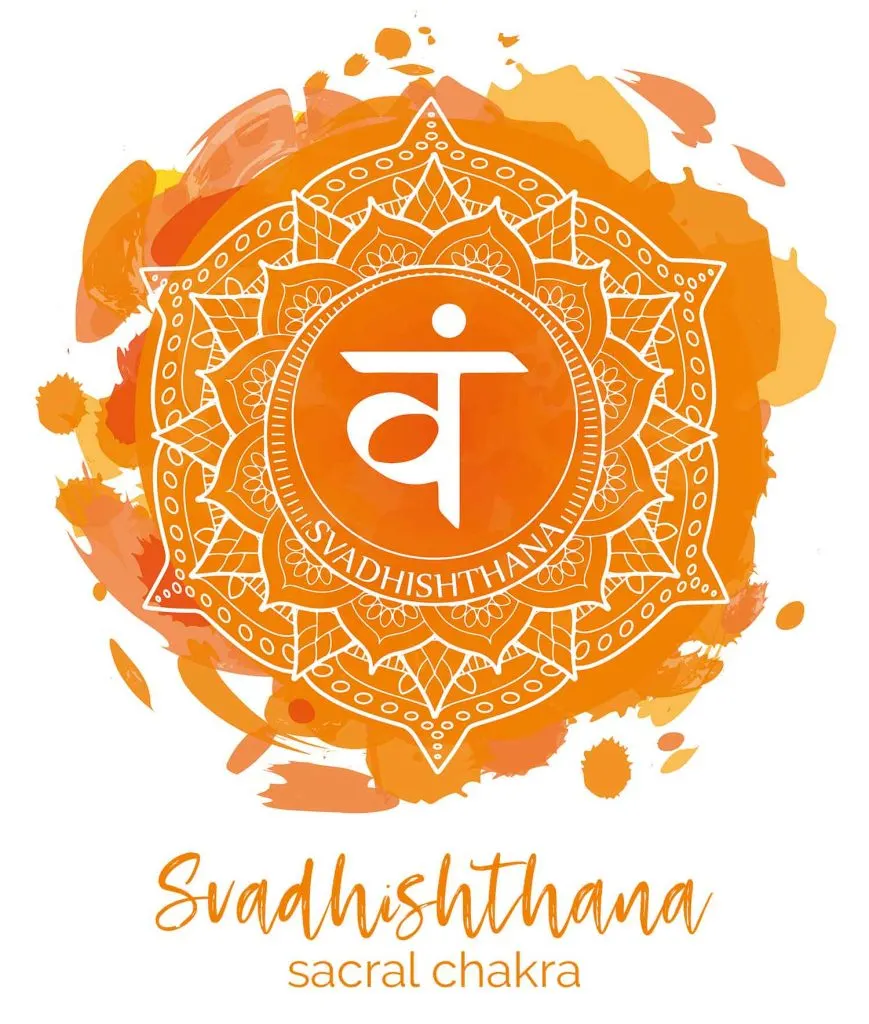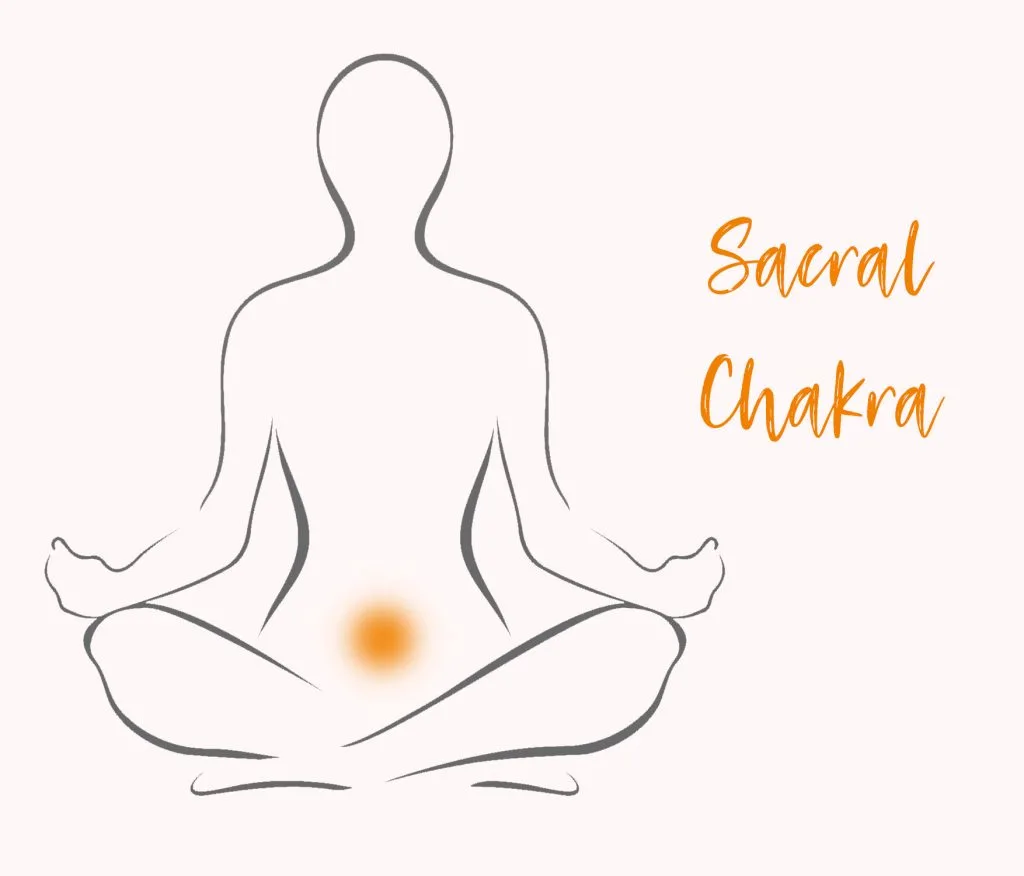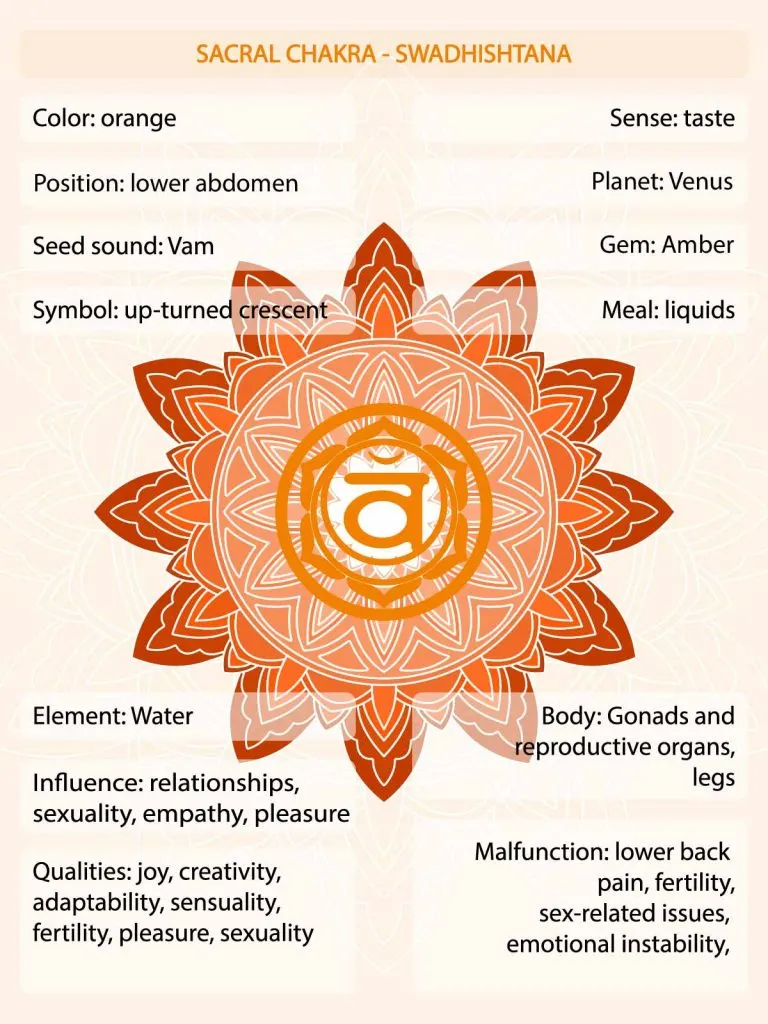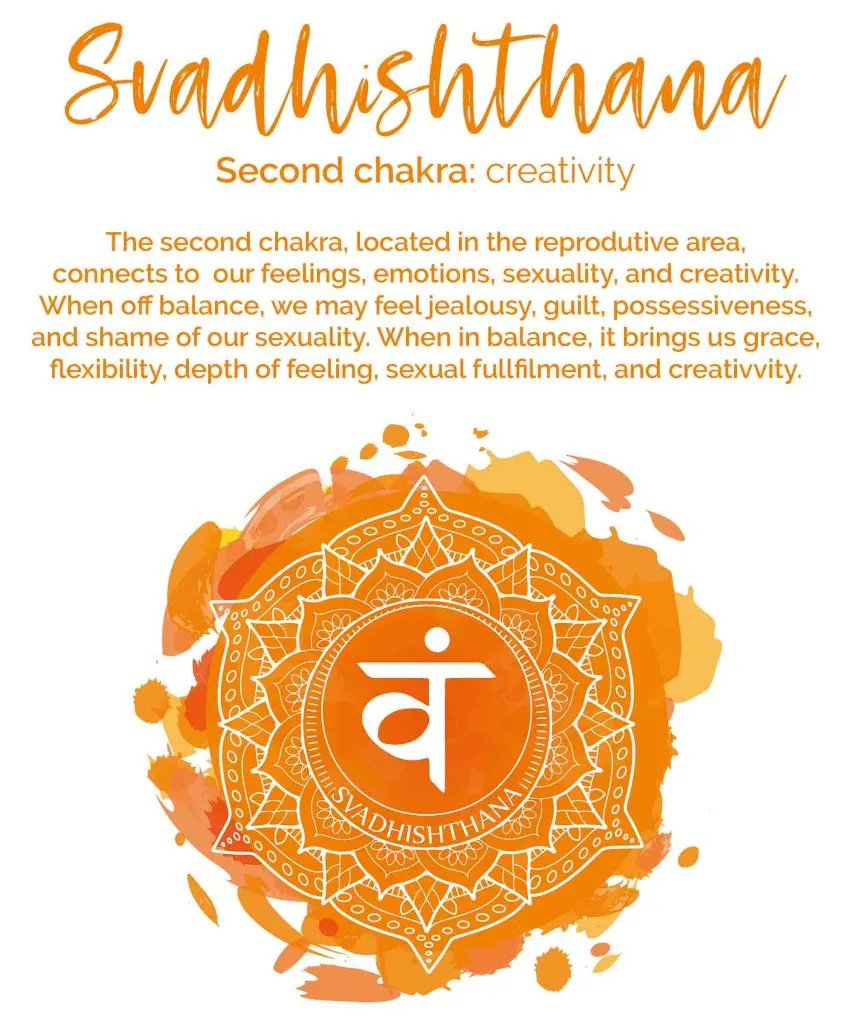Find out the orange chakra meaning and how the second chakra, also known as the sacral chakra, is related to the meaning of the color orange.

According to Tantrism, orange chakra, also known as Svadhisthana or sacral chakra, is the second chakra out of the seven primary chakras that align with the spinal cord.
The sacral chakra is the center of emotions, creativity, and pleasure stimulation. The word “Svadhisthana” (where “Swa” means “self” and “adhishthana” means “established”) means “where your being is established.”
This article aims to educate you on all there is to know about Svadhisthana, including its meaning, relationship to the color orange, and the psychological relationship between the chakra color and specific attributes.
At the end of this article, you will have attained sufficient knowledge regarding the Svadhisthana. Mastery of this knowledge is essential as it helps you to:
- Develop richer, more positive emotions
- Nurture healthy relationships
- Increase pleasure and sensuality
- Increase creativity
- Foster intimacy
- Enhance growth and change
- Improve carnal and general well-being
- Nurture fantasies.
Discover the meaning of all the seven chakra colors and balance your energies.
Flow with the rhythms of life by opening the sacral chakra.
- Sanskrit name: Svadisthana
- Color: Orange
- Seed mantra: Vam
- Location: Lower abdomen
- Element: Water
- Function: Physical desires, creativity
- Associated gemstones: Amber, Carnelian, Citrine, Coral, Moonstone.

Sacral Chakra
The orange chakra is located just below the navel, at the center of the lower belly. It can also be found in the back, in the lumbar vertebrae.
It is particularly effective on the genitals, lymphatic and circulatory systems, bladder, kidney, large intestines, lower back, and abdominal region.
The color orange represents activity, purity, and increasing consciousness and lust. Being the center of passion, the Svadhisthana begets the power to create, controls desire and needs.
Therefore, the Svadhisthana is associated with the orange color. Also, the sacral chakra is described to possess feminine energy and linked to the water element with a pictorial representation of a flower and a crescent moon.
Rooted in the meaning of the colors, mastery of the orange chakra leads to joy, self-confidence, and balanced energy.
Open and Balanced Chakra
An open and balanced orange chakra leads to increased creativity and the ability to maintain intimacy in relationships. The importance of this effect cannot be taken lightly.
The Svadhisthana guides some of the most important feelings and factors needed to live a fulfilled life.
The imbalance of this chakra could lead to extreme cases like reproductive dysfunction or repressed physical emotions, insecurity about one’s body, and the inability to control one’s biological urges.
However, the effects that an open and balanced orange chakra has on the body include:
- Emotional balance
- Harmony with one’s self and one’s environment
- Playfulness
- Freedom
- Intuition
- Increased creativity and lust
- The ability to express emotions efficiently

Overactive Chakra
An overactive chakra means the flow of too much energy or the overstimulation of a particular chakra.
Therefore, an overactive Svadhisthana leads to overwhelming emotions, which causes severe hypersensitivity and mood swings, overwhelming physical drive, and general dissatisfaction at almost everything.
Trying to curb this dissatisfaction can make a person obsessively look for solace in various ways and, more often than not, create an addiction problem. Generally, this can be caused by the feeling of pride and anger.
A person with an overactive orange chakra will feel any of the following symptoms in no particular order or number:
- Overwhelming feeling
- Short temper
- Manic or emotional instability
- Impatience
- Hypersensitivity
- Obsessive behavior
- Addiction
- Eating disorders
- Increased physical urges
Underactive Sacral Chakra
An underactive or blocked Svadhisthana harms the body’s physical, mental, emotional, and spiritual well-being.
The emotions that ensue from this could range from uncertainty, a loss of control, and hopelessness to the inability to deal with change.
An underactive Svadhisthana arises from co-dependency or being overly dependent on others and neglecting to stay true to one’s self.
Symptoms of an underactive sacral chakra include:
- Depression
- Frustration
- Lack of energy
- Worry
- Fear of pleasure
- Lack of creativity
- Low libido and lack of desire
- Insecurity about one’s own body
- Detachment
- Constant fatigue

How to Balance Orange Chakra
Dealing with the imbalance of the orange chakra depends on whether the Svadhisthana is overactive or blocked. The orange chakra may become unbalanced as a result of psychological issues like pride and co-dependency.
The first step to balancing the Svadhisthana is to acknowledge that there is a problem and understand the need to merge mind and body to attain oneness.
Some foods are renowned for their role in restoring balance to the Svadhisthana. These foods are usually rich in healthy fats or orange in colors such as fish, flax, poppy, sesame, hemp, pumpkin and sunflower seeds, oranges, carrots, sweet potatoes, peaches, apricots, mangos, papayas, pumpkin, and mandarin.
Surrounding yourself with orange things can also help.
Furthermore, in some cases, regular exercise, especially yin-yoga and open hip movements, is required to restore balance the Svadhisthana.
“You can do this by allowing your body to flow through dancing or dance-like movements, stretching your hips, and different yoga asanas or poses,” says Serena Poon, reiki master.
Aromatherapy can also prove helpful to the restoration of balance to chakra. Examples of essential oils and fragrances that can be used here are cardamom, eucalyptus, chamomile, spearmint, patchouli, ylang-ylang, rose, and clary sage.
Breaking bad habits that lead to having an unbalanced Svadhisthana can be difficult. However, old habits can be broken and replaced by new ones through affirmations.
Some every day, effective affirmations for the Svadhisthana would be:
- I am grateful for the body which supports and empowers me.
- I am thankful and joyful to be me.
- I accept, embrace, and celebrate my body.
- I honor my natural physical feelings.
- I open myself up so that creativity and passion flow through me
- I have boundaries that protect me.
- I deserve to experience physical pleasure and have my needs met.
- I feel safe expressing my carnal self in fun, creative, and healthy ways.
- I attract relationships with loving, good people who will support me.
- I embrace change and make the best of my future.
- Every day, I experience more joy and satisfaction.
- I flow with inspiration and creativity.
- My body is vibrant, and I am comfortable inside it.
Find out how you can balance your red chakra, yellow chakra, green chakra, blue chakra, indigo chakra, and purple chakra.
Wrapping Up on The Orange Chakra
Having a balanced orange chakra is the bedrock of having a healthy mind, a healthy body libido, and healthy relationships, the absence of which leads to a myriad of unsavory problems.
Still, we hope this article can help you find balance in your chakras and consequently in your life.
Did you enjoy this article about the orange chakra meaning? Then share it with a friend who might enjoy the read too.

Luna
Saturday 4th of February 2023
Fantastic
Nikki
Wednesday 8th of June 2022
Wonderful article, thank you.